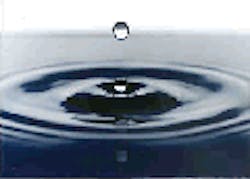Data Sought for 26 Drinking Water Contaminants
Twenty-six unregulated contaminants will be monitored by many U.S. drinking water suppliers under a new rule proposed by the Environmental Protection Agency. This second cycle of the Unregulated Contaminant Monitoring Rule (UCMR 2) also proposes the use of nine analytical methods to detect the contaminants.
The data collected will help EPA determine whether to regulate the contaminants, their occurrence in drinking water, the potential population exposed to each, and the levels of exposure.
The rule encompasses some contaminants that are not regulated under existing law. EPA currently has regulations for more than 90 contaminants. The Safe Drinking Water Act requires EPA to identify up to 30 contaminants for monitoring every five years. The first cycle, UCMR 1, published in 1999, covered 25 chemicals and one microorganism. The contaminants are divided into two lists: assessment monitoring and screening surveys. EPA has information from some public water systems on 11 contaminants chosen for assessment monitoring but lacks a national estimate of how widely they occur. EPA needs to collect more data on the 15 selected for screening surveys because analytical methods have been only recently developed.
All public water systems serving more than 10,000 people and a sample of 800 systems serving 10,000 people or fewer will monitor those contaminants on the assessment list for 12 months during July 2007 through June 2010. Additionally, 322 systems serving more than 100,000 people and 800 serving 100,000 or fewer will conduct the screening surveys during a 12-month period from July 2007 through June 2009.
The substances were chosen through a process that included a review of:
· An existing list of "reserved" contaminants for which no analytical methods were yet available;
· EPA's Contaminant Candidate List, which contains priority contaminants that are researched to make decisions about whether regulations are needed. The contaminants on the list are known or anticipated to occur in public water systems. However, they are currently unregulated by existing national drinking water regulations; and
· Additional contaminants of concern based on current research of occurrence and various health-risk factors.
Costs for the five-year UCMR 2 will total approximately $42.1 million. EPA will conduct and pay for the monitoring for those water systems serving 10,000 people or fewer at a cost of $8.05 million.
For general information on UCMR 2, visit the EPA Safewater website at: http://www.epa.gov/safewater/ucmr/ucmr2 or call the Safe Drinking Water Hotline at 800-426-4791, Monday through Friday, from 9 a.m. to 5 p.m., Eastern time.
Source: EPA
